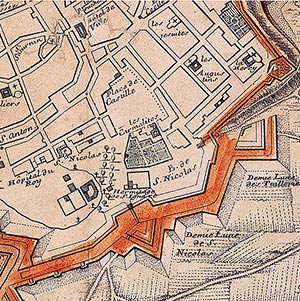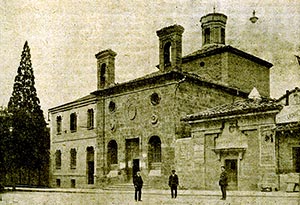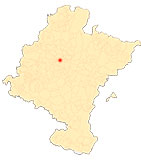Basilica of St. Ignatius of Loyola
By Ricardo Fernández Gracia
|
|
|
|
|
|
|
|
|
|
|
|
|
|
|
|
|
|
|
|
|
|
|
|
|
|
|
|
|
|
|
|
|
|
|
presentation
Anyone standing in front of the Basilica of San Ignacio in Pamplona can recall how many changes have taken place in the building and the city over the last five centuries in relation to the report and historical awareness of the founder of the Jesuits.
The place itself recalls the place where the saint was wounded quite accurately, next to the castle. It also reminds us of the first report erected at the beginning of the 17th century, at a time of transformation of that place, with the construction of the convent of San José de las Carmelitas Descalzas and the "construction" of the process that would bring the saint of Loyola to the altars. The second half of the 17th century saw the architecture of the current basilica, erected at the behest of Don Diego de Benavides, Count of Santesteban, Viceroy of Navarre between 1653 and 1661, from where it went to Peru under the same name position. In the latter viceroyalty, he made contact with some Navarrese Jesuits who collected donations for the construction of a monument to the saint, in memory of his wound in the defence of the castle of Pamplona.
Without entering the building and opening the gate, we can see that in the first half of the 18th century, the time of the triumph of decoration, the complex underwent a transformation, with rich plasterwork and a fashionable altarpiece. The triumph of ornamentation is also evident in the large central coat of arms on the façade. The latter also bears witness to the departure of the Jesuits and their suppression, the central motif containing the IHS, the emblem of high school, having been shaved off.
Traces of the 19th century can be seen in the Diputación palace building and those of the 20th century in the mutilation of the complex in 1927 for the straight alignment of the Avenida de San Ignacio, at the cost of a large part of the building. The extension of the Diputación in 1965 next to the basilica means that the latter is almost unnoticed.
In spite of everything, a visit to the building at visit is of obvious interest, as today it is the only building with a large part of its decoration from the Society of Jesus in Pamplona, including several canvases of paintings brought from Rome; ultimately, it is an expression of the cultural, artistic and religious level that the Jesuits reached throughout the 17th and 18th centuries.
file Diocesan of Pamplona. Government of the Diocese. administrative office de Cámara. Boxes 293, 294, 295, 296 and 297.
ASCUNCE, E., Íñigo de Loyola, capitán español, y el castillo de Pamplona, Madrid, Aguado, 1939.
AZANZA LÓPEZ, J., La arquitectura religiosa del Barroco en Navarra, Pamplona, Government of Navarre, 1998.
EGUILLOR, J. R., Loyola, historia y arquitectura, San Sebastián, Etor, 1991.
FERNÁNDEZ GRACIA, R., El retablo barroco en Navarra, Pamplona, Government of Navarre, 2003.
FERNÁNDEZ GRACIA, R., "The Jesuits in Pamplona 1580-1767". Diario de Navarra, 28 April 2014, pp. 70-71.
FERNÁNDEZ GRACIA, R., "Heritage and identity (52). The basilica of San Ignacio in Pamplona". Diario de Navarra, 21 May 2021, pp. 62-63.
GARCÍA GAÍNZA, M.ª C. et al., Catalog Monumental de Navarra V. Merindad de Pamplona ***, Pamplona, Institución Príncipe de Viana, 1997.















